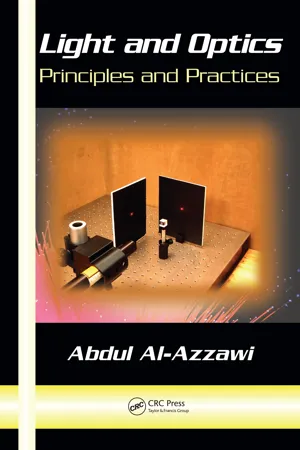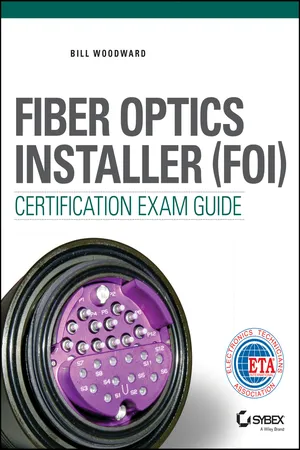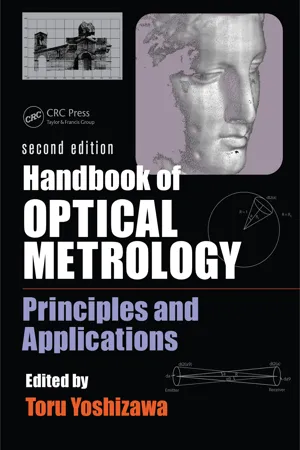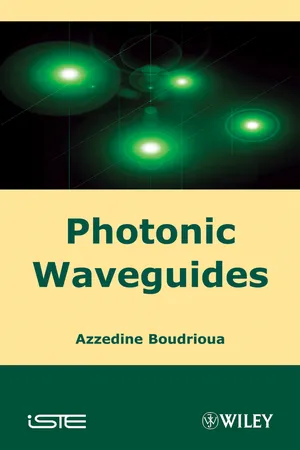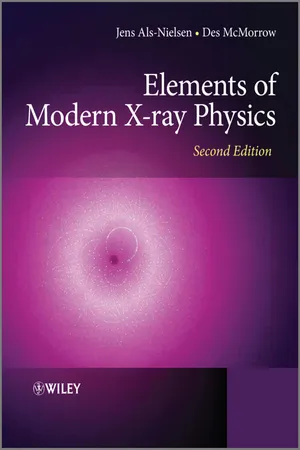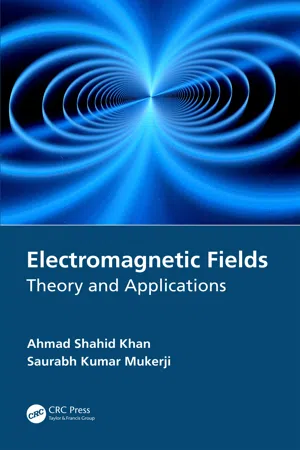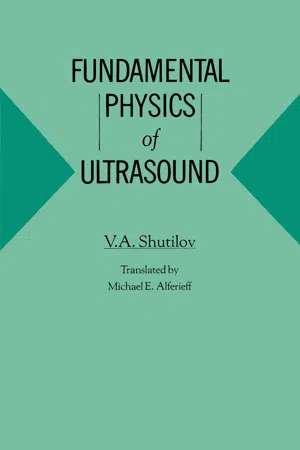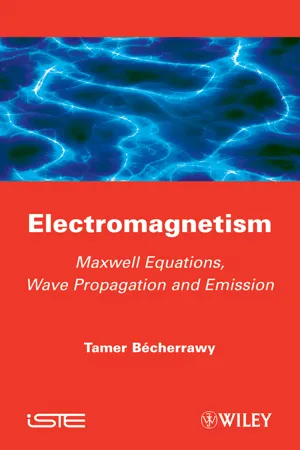Physics
Total Internal Reflection
Total internal reflection occurs when a light ray traveling through a denser medium strikes the boundary of a less dense medium at an angle greater than the critical angle. Instead of refracting into the less dense medium, the light is completely reflected back into the denser medium. This phenomenon is used in various optical devices such as fiber optics and prisms.
Written by Perlego with AI-assistance
Related key terms
Related key terms
1 of 4
Related key terms
1 of 3
12 Key excerpts on "Total Internal Reflection"
- eBook - ePub
Light and Optics
Principles and Practices
- Abdul Al-Azzawi(Author)
- 2018(Publication Date)
- CRC Press(Publisher)
Figure 7.6 . An incident light ray is partially reflected and partially refracted, and then transmitted at the interface plane, separating two transparent media.Figure 7.11 shows a light ray passing through two media (air and glass). The change in index of refraction at each interface causes the incident ray to bend twice. This figure also shows that the angle θ1 equals the angle θ3 , and the ray exiting the glass plate is parallel to the incident ray.FIGURE 7.11 Light ray refraction through a glass plate.7.3.1 CRITICAL ANGLE AND TOTAL INTERNAL REFLECTIONTotal Internal Reflection can occur when light, traveling in a more optically dense medium, is incident on the boundary with a less optically dense medium, as shown in Figure 7.12 . The index of refraction (n1 ) of medium 1 is greater than index of refraction (n2 ) of medium 2. A good example is when light goes from water into air. Consider a light beam traveling in medium 1 and incident on the boundary interface between medium 1 and medium 2. Various possible directions of the light ray are indicated by rays 1 through 5, as illustrated in Figure 7.12 . The refracted rays are bent away from the normal, according to Snell’s law because n1 is greater than n2 . Furthermore, when the light ray refracts at the interface between the two media, it partially reflects back into medium 1. Figure 7.12 shows that rays 1 through 4 are partially reflected back into medium 1, and ray 5 is totally reflected back into medium 1.FIGURE 7.12 Critical angle and Total Internal Reflection.Consider individual light rays in Figure 7.12 :1. Ray 1 is incident perpendicular to the interface between the two media, and passes straight through from medium 1 to medium 2. Part of ray 1 reflects back in the same direction into medium 1; this type of reflection is called a back reflection. Back reflection is one type of loss in optical devices.2. Ray 2 is an incident ray in medium 1 to medium 2, where n1 > n2 - Bill Woodward(Author)
- 2014(Publication Date)
- Sybex(Publisher)
normal. Light traveling along the normal will change speed but will not change direction.Model used to calculate refractionFigure 3.10The angle of incidence represents the angle between the incident ray and normal. The angle of refraction represents the angle between the refracted ray and normal. Note that a small amount of light is also reflected from the interface at an angle equal to the angle of incidence.Total Internal Reflection
As shown in Figure 3.10 , light passing from a lower index of refraction to a higher index of refraction refracts toward normal. This is illustrated by the angle of refraction ( θ 2 ), which is smaller, then the angle of incidence (θ 1 ). When light passes from a higher index of refraction to a lower index of refraction, as shown in Figure 3.11 , the light refracts away from normal.We can calculate the amount of refraction using Snell's law, which shows the relationship between incident light and refracted lightLight passing from higher index of refraction to lower index of refraction refracts away from normal.Figure 3.11- n1 sinθ 1 = n2 sinθ 2
where n1 and n2 are the index of refraction values of each material, θ 1 is the angle of incidence, and θ 2 is the angle of refraction.Recall that the phenomenon that makes fiber-optic transmission possible, Total Internal Reflection (TIR), is caused by the same principles that cause refraction. In the case of TIR, the light is passing from a higher index of refraction to a lower index of refraction at an angle that causes all of the light to be reflected. What has happened is that the angle of refraction has exceeded 90° from normal.The incident angle required to produce a refracted angle of 90° is called the critical angle. As the incident ray moves from normal toward the critical angle, less and less of the incident ray's energy is carried into the refracted ray. At the critical angle all of the incident ray's energy is refracted along the interface. As the incident angle exceeds 90°, the light is reflected, as shown in Figure 3.12- eBook - ePub
- Galen C. Duree(Author)
- 2011(Publication Date)
- For Dummies(Publisher)
Frustrated Total Internal Reflection: Dealing with the evanescent wave(contain real and imaginary parts). When this increase happens, the magnitude is still 1, indicating that all light incident on a surface undergoing internal reflection is totally internally reflected — no light goes through to the other material. This major phenomenon is used with fiber optics, which I talk about in more detail in Chapter 16.In the preceding section, I mention that no light enters the second material as long as the incident light has an angle of incidence greater than the critical angle. However, if you look very close to the surface where the light hits, you find a small, exponentially decaying wave in the second material. If you place another material close to, but not touching, the first boundary, the second material can pick up and propagate the wave away. This wave that passes into the second material is called anevanescent wave.If this evanescent wave is intercepted with a high-index material before its amplitude is zero, the wave continues on in a process called frustrated Total Internal Reflection.(No, that’s not what you do during a midlife crisis.) The energy from this wave comes from the incident wave, so when Total Internal Reflection is frustrated, the energy in the reflected beam decreases by the amount carried away in the evanescent wave. If the process isn’t frustrated, the energy returns to the reflected beam so that the reflected beam experiences no energy loss.The fiber-optics industry uses the phenomenon of frustrated Total Internal Reflection quite a bit to control the amount of light in different parts of the fiber network (head to Chapter 16 for more information about this application). This phenomenon is also used in devices called - eBook - ePub
Handbook of Optical Metrology
Principles and Applications, Second Edition
- Toru Yoshizawa, Toru Yoshizawa(Authors)
- 2017(Publication Date)
- CRC Press(Publisher)
Perpendicular polarization: At any angle of incidence, the phase of the perpendicular component of the electric field of the wave remains the same (i.e., in this case, the phase of the magnetic field changes by π).b. Parallel polarization: The phase of the parallel component remains unchanged for angles of incidence smaller than Brewster angle, θi < θB , and changes by π for angles of incidence exceeding θB (thus, the phase of the magnetic filed vector in the reflected wave does not change).5.2.3 TOTAL INTERNAL REFLECTION OF LIGHTWhen light impinges on the interface from the optically denser medium, n1 > n2 , there is an angle of incidence, θi for which according to Equation 5.44 the refracted ray emerges tangent to the surface, θt = 90°. This angle is called critical angle θc . The critical angle is determined from Snell’s law by substituting θt = 90°:sinθ c==n 2n 1n 12()n 2<n 1(5.73) In this case, the angles of refraction θt have real values only for those incident angles θi , for which sin θi < n12 . When the angle of incidence is larger than the critical angle, Total Internal Reflection takes place. For a glass/air interface with nglass = 1.52, θc = 41.1°, the fact that θc is less than 45° makes it possible to use the hypotenuse of a triangular prism with angles 45°, 45°, and 90° as a totally reflecting surface.5.2.3.1 Reflected WaveFor incidence angles smaller than the critical angle θi < θc , the Fresnel’s formulae (Equations 5.50 , 5.55 , and 5.63) are used, and the phase relations discussed for internal reflection above are valid. The case of Total Internal Reflection, when the angle of incidence exceeds the critical angle, requires a special consideration.Amplitude ratios: The law of refraction sin θt = sin θi /n does not give a real value for θt , when θi > θc . Therefore, cos θt in the Fresnel’s formulae is a complex quantity, represented ascosθ t= ±= ± isin 2θ t− 1− 1sin 2θ in 2(5.74) where for clarity and simplicity n12 - eBook - ePub
Internal Reflection Spectroscopy
Theory and Applications
- Francis M. Mirabella(Author)
- 2020(Publication Date)
- CRC Press(Publisher)
c . The angle of incidence θ is defined as the angle with respect to the normal. The critical angle is defined byθ c=sin− 1n(1)2 1Figure 1 Schematic diagram of the internal reflection spectroscopic arrangement. The radiation propagates through the internal reflection element (IRE) as a transverse wave and is totally reflected at the IRE-rarer medium interface. The evanescent field penetrates the rarer medium as a nontrans verse, exponentially decaying wave having electric vector components in all spatial orientations.where n 21 = n 2 /n 1 .The most simple and straightforward treatment of Total Internal Reflection (TIR) is for an infinite plane wave at an interface between semi-infinite nonabsorbing media. These assumptions permit the properties of the evanescent field in the rarer medium to be described with relatively simple theory [1]. Some of the properties of the evanescent field are as follows.- The field intensity in the rarer medium is nonzero and there is an instantaneous normal component of energy flow into this medium whose time average is zero. Thus, there is no loss of energy and the propagating radiation in the denser medium is totally internally reflected.
- The evanescent field in the rarer medium is a nontrans verse wave and has components in all spatial orientations. This property has broad implications with respect to the uniqueness of internal reflection spectroscopy.
- The evanescent field is confined to the vicinity of the surface of the rarer medium and decreases in intensity with distance into this medium normal to the surface (along the Z -axis in Figure 1 ).
- There is a nonzero energy flow parallel to the surface (along the X axis in Figure 1 ) resulting in a displacement of the incident and reflected waves. This is the so-called Goos-Hanchen shift [2,3,4]. There have been several attempts to correlate the lateral shift, due to the Goos-Hanchen shift, with the depth of penetration and the effective thickness. Hirschfeld [5] proposed relationships that reduced to the expression D = d e cosθ, where D is the Goos-Hanchen shift, when θ is close to the critical angle. This expression was suggested for either polarization. Epstein [6] reexamined this question and found no correlation between the effective thickness and the magnitude of the Goos-Hanchen shift. Epstein observed that the effective thickness is defined on the basis of the absorption coefficient, which is significant only for homogeneous plane waves, whereas the Goos-Hanchen effect involves nonhomogeneous waves, concluding that there is no simple relation of the two because of this intrinsic difference. Furthermore, while it was found that d e /D was unity at the critical angle, in agreement with Hirschfeld’s result, this relationship was of little use because both d e and D
- eBook - ePub
- Jerry Marion(Author)
- 2012(Publication Date)
- Academic Press(Publisher)
degree of polarization may be defined asFIG. 6-5(6.34)so that P (00 ) = P (900 ) = 0 and P (θB ) = 1; P (θ0 ) < 0 except for normal and for grazing incidence.6.4 Total Internal Reflection
An interesting application of the Fresnel equations is to consider the electromagnetic wave to be incident on the boundary surface from the more dense of the two media; i.e., we have n 1 < n 2 . If we start with θ0 = 0 and allow the angle of incidence to increase, all goes well until we reach an angle such that θ2 = π/2. From Snell’s law this occurs when sin θ0 = n 2 /n 1 , and the angle is called the critical angle :(6.35)We may write the cosine of the angle of refraction as(6.36)so that cos θ2 = 0 for θ0 = θc , but as θ0 is increased beyond θC , cos θ2 becomes a pure imaginary number. Therefore we write(6.37a)where Q is defined as the positive square root(6.37b)In order to determine the effect on the field in Medium 2 when the angle of incidence exceeds the critical angle, we write E 2 as [see Eq. (6.16) ](6.38)If we take the coordinate axes as in Fig. 6-2 , this becomes(6.39)But(6.40)where W is a real number, greater than unity. Thus, using Eqs. (6.37a) for cos θ2 , we have(6.41)We therefore see that for θ0 < θc , the wave is propagated along the surface and is attenuated in the direction into the medium. The phase velocity of the surface wave is(6.42)which is a function of the angle of incidence θ0 . We see that in the event Medium 2 is air (n2 = 1), the phase velocity is justV1 = c/n1 for grazing incidence.The amplitudes of the reflected electric vectors may be calculated from Fresnel’s equations [Eqs. (6.25a) and (6.28a) ]. For the case of E - eBook - ePub
Photonic Waveguides
Theory and Applications
- Azzedine Boudrioua(Author)
- 2013(Publication Date)
- Wiley-ISTE(Publisher)
Chapter 1Optical Waveguide Theory
Optical waveguides are structures with three layers controlling light confinement and propagation in a well defined direction inside the central layer (Figure 1.1 ).Light confinement is carried out by successive total reflections on the two interface guides – substrate and guide – superstrate.Figure 1.1. Planar optical waveguideLight propagation is governed by an interference phenomenon which occurs inside the guide between two waves; one of them undergoes two successive total reflections. For a better understanding of the guided wave propagation, we will recall the main principles of these two phenomena, total reflection and interference, inside a transparent plate with parallel faces.1.1. Principles of optics
1.1.1. Total reflection phenomenonLet us consider an interface separating two mediums 1 and 2, which are dielectric, lossless, homogenous and isotropic with refractive indices n1 and n2 , respectively. An electromagnetic wave propagates from 1 to 2 with an angle of incidence θi related to the normal of the interface (Figure 1.2 ).The electric field of the incident wave is given by:Figure 1.2. Reflection on an interface (medium 1/medium 2)[1.1][1.2]is the wave vector in the vacuum (λ: wavelength in the vacuum) and Ei0 is the incident wave amplitude. The electric fields of the reflected and transmitted waves can be written:[1.3][1.4]In addition, refraction law is given by:[1.5][1.6]In the case of n1 > n2 , there is an incident angleθl, as:[1.7]Forθi>θl, the incident wave is totally reflected into medium 1 (total reflection) and the angleθtof the transmitted wave is complex [Bor 1999, War 1988]:[1.8]From [1.4 ], the transmitted wave can be written as:[1.9]This wave propagates in the Oz direction with an amplitude exponentially decreasing in the Ox direction. This is called an evanescent wave. Also, according to Fresnel’s formulae, the considered wave undergoes a phase shift compared to the incident wave, given by [Bor 1999]: - eBook - ePub
- Jens Als-Nielsen, Des McMorrow(Authors)
- 2011(Publication Date)
- Wiley(Publisher)
Chapter 3 Refraction and reflection from interfacesA ray of light propagating in air changes direction when it enters glass, water or other transparent materials. This is the basis for the classical optics of lenses. Quantitatively, the phenomenon is described by Snell’s law. For visible wavelengths the refractive index n of most transparent materials has a value in the range between 1.2 and 2. The refractive index depends on the frequency ω of the light, so that blue light is refracted more than red light, etc.The index of refraction for electromagnetic waves displays resonant behaviour at frequencies corresponding to electronic transitions in atoms and molecules. On the low frequency side of a resonance, n increases with ω, and this is known as normal dispersion. Immediately above the resonance frequency it decreases, and as more and more resonances are passed, the magnitude of the index of refraction decreases. X-ray frequencies are usually higher than all transition frequencies, perhaps with the exception of those involving the inner K- or maybe L-shell electrons. As a result in the X-ray region n turns out to be less than unity. (See Fig. 1.8 and accompanying discussion.) This reflects the phase shift of π in the Thomson scattering of X-rays, as we shall see. Moreover, it leads to the phenomenon of total external reflection from a flat, sharp interface: for incident glancing angles α below a certain critical angle αc the ray will no longer penetrate into the material but will be totally reflected from it. The deviation of n from unity is tiny, so the critical angle is small. The reader might wonder how n can be less than unity, since the velocity in the material is c /n , and this would seem to imply that the speed of light is higher in the material than in vacuum. However, c /n is the phase velocity, not the group velocity. The latter, evaluated as d ω/d k, is indeed less than c - eBook - ePub
Electromagnetic Fields
Theory and Applications
- Ahmad Shahid Khan, Saurabh Kumar Mukerji(Authors)
- 2020(Publication Date)
- CRC Press(Publisher)
When a wave strikes the boundary surface such that the ray lies along the normal the wave it is referred to as perpendicular incidence. When a wave strikes the boundary at an angle between 0° and 90° it is said to be oblique incidence. Figure 17.1c the direction of propagation of a wave, a ray striking a plane perpendicular to the direction of propagation. A ray represented by a straight line does not indicate the direction of the E or H fields. Figure 17.1c also shows E and H components. In Figure 17.1b, the E field perpendicular to the plane of incidence, is represented by a cross in a circle while entering the plane and by a dot in a circle while emerging from the plane. Some of these terms are further illustrated in Figure 17.2. FIGURE 17.2 Parameters related with reflection and refraction. The term reflection indicates rebounding of electric field (or light, heat or sound) from a surface through the same medium in which the incident field exists. The term refraction refers to the change of direction of a ray which is obliquely incident and passes through a surface bounding the two media in which the ray has different velocity. In connection with the reflection and refraction one can observe that: (a) in isotropic media when a ray passes from rarer to denser media it refracts toward the normal and when it passes from denser to rarer media away from the normal; and (b) the sines of incident and refracted angles bear a constant ratio to each other for any given media. If the first medium is air (or a vacuum), this ratio is called the refractive index or index of refraction ; (c) the incident, reflected, and refracted rays lie in the same plane; and (d) the incident and reflected angles are always equal. There are some more terms commonly referred to in connection with the reflection, refraction, and the transmission of waves - eBook - ePub
- Shutilov(Author)
- 2020(Publication Date)
- CRC Press(Publisher)
1 ≃ 35°.We shall now study the conditions for total reflection of a plane wave from the boundary between two media. Aside from the general cases z 2 → 0 and z 2 ≫ z 1 , corresponding to reflection from the boundary with a vacuum or from an infinite solid wall, the transmission coefficient d l vanishes (and the reflection coefficient ρ l = 1) when the cosine of one of the angles θ 1 and θ 2 vanishes. Since the condition cosθ 2 = 0 indicates propagation of the incident wave along the boundary, only the case cosθ 2 = 0, i.e., θ 2 = π /2, is of interest. By virtue of relation (VII.37), this angle of refraction corresponds to some “criticar” angle of incidence θ cr , satisfying the conditionsin(VII.43)θ cr=c 1/c 2.For this angle of incidence, the refracted ray vanishes and all of the energy in the transmitted wave for angles θ 1 < θ cr , is transferred into the reflected wave. This phenomenon, known as Total Internal Reflection , according to Eq. (VII.43), can occur only if c 1 < c 2 , i.e., when the velocity of sound in the medium 2 is higher than in medium 1, for example, for an ultrasonic wave incident from a liquid on the boundary with a solid. The magnitude of the critical angle can, in this case, be very small, for example, for a water—aluminum boundary (c 1 ≃ 1.5 · 105 cm/s , c 2 ≃ 6 · 105 cm/s ), θ cr ≃ 14°. For a gas-solid boundary, on the other hand, the condition c 1 ≪ c 2 may be assumed to hold, for which, according to (VII.43), the critical angle is close to π /2. This means that only waves incident on the boundary almost at a right angle penetrate from a gas into the solid, while the remaining waves undergo Total Internal Reflection. It is interesting to note that in the opposite case (c 1 ≫c 2 ), according to expression (VII.37), the angle of refraction θ 2 is close to π - eBook - ePub
Electromagnetism
Maxwell Equations, Wave Propagation and Emission
- Tamer Becherrawy(Author)
- 2013(Publication Date)
- Wiley-ISTE(Publisher)
L , given by[11.2]At the angle of incidence equal to i L the angle of refraction is θ" = 90°. If the angle of incidence θ is larger than i L , the wave undergoes total reflection .The wave theory enables us to establish the laws of reflection and refraction using the boundary conditions (or continuity equations ) at the interface . We have only to assume that these conditions are expressed as linear relations between the incident wave u , the reflected wave u ′, and the transmitted wave u ″, and their partial derivatives with respect to time or space coordinates. In the case of simple harmonic waves , the time derivative is simply iωu and the derivative with respect to x , for instance, is –ik x u . Thus, the boundary conditions are linear, of the general form au + bu ′ + cu " = 0, that is,[11.3]A relation of this form can be verified at any t and at any point r of the interface only if the angular frequency and the scalar product (k.r) on are the same for the three waves, u , u ′ and u ". We deduce that the angular frequency undergoes no change in the reflection and transmission (ω = ω′ = ω") and the tangential component of k, k′, and k" (i.e. their components which are parallel to ) are the same. The normal component of the wave vectors are obtained using the dispersion relation ω = ω(k) for each medium.Figure 11.1.Laws of reflection and refractionWe choose the axes of coordinates in such a way that Oxy is tangent to the interface with Oz oriented from medium (1) toward medium (2) and the x axis in the plane of incidence (formed by k and the normal axis Oz ) (Figure 11.1 ). Due to the symmetry with respect to the plane of incidence Oxz , the vectors k′ and k" are in this plane. This same result may also be obtained by analysis. Indeed, let θ be the angle of k with Oz , θ′ the angle of k′ with Oz ′, and θ" the angle of k" with Oz (so they lie between 0 and 90°). Let us assume that the azimuthal angles of the reflection plane and the refraction plane are and - Pascal Richet, Pascal Richet(Authors)
- 2021(Publication Date)
- Wiley-American Ceramic Society(Publisher)
Figure 4 .(a) Total Internal Reflection, single/multi/and GI fiber designs, (b) electromagnetic modes, and (c) schematic designs of photonic crystal fiber and MOF.Figure 4Source: Reprinted with permission from [5 ].2.2.1 Conventional Core–Clad Optical Fibers
As noted above, in the ray‐optic view, optical fibers guide light via Total Internal Reflection whereby the light is confined in the high‐index core, which is surrounded by a lower‐refractive index cladding. Under this condition, i.e. light incident from a high‐index region into a lower‐index region, Snell's law for light refraction is violated when the angle of incidence exceeds a critical angle (given by sin−1 (nclad /ncore ), where nclad is the refractive index of the clad and ncore is the refractive index of the core, and reflection, instead of refraction, occurs (Figure 4 a). The index difference between core and clad need not be large and actually is one of the design parameters that define the behavior of the resultant waveguide.For simple descriptions, the ray‐optic picture generally suffices. For more sophisticated designs, however, light is more correctly described as a wave, and the aforementioned ray‐optic construction is replaced with a wave‐optic formalism in which electromagnetic modes are confined and allowed to propagate within a higher refractive index core coaxially surrounded by a lower‐refractive index cladding. In the wave‐optic perspective, the transverse components of the light waves constructively and destructively interfere across the core, influenced by the cladding, yielding stable propagating fiber modes. Some of the light power inevitably extends into the cladding: this component is called the evanescent field. The exact distribution of these modes depends on the core size, refractive index contrast between core and clad (defined by the numerical aperture, NA = [ncore 2 − nclad 2 ]1/2 ), the wavelength of light, and the cross‐sectional geometry of the core; i.e. whether rectangular, circular, elliptical, etc. Thorough reviews of conventional core/clad optical fiber designs are given in [5 , 11
Index pages curate the most relevant extracts from our library of academic textbooks. They’ve been created using an in-house natural language model (NLM), each adding context and meaning to key research topics.
Explore more topic indexes
Explore more topic indexes
1 of 6
Explore more topic indexes
1 of 4
